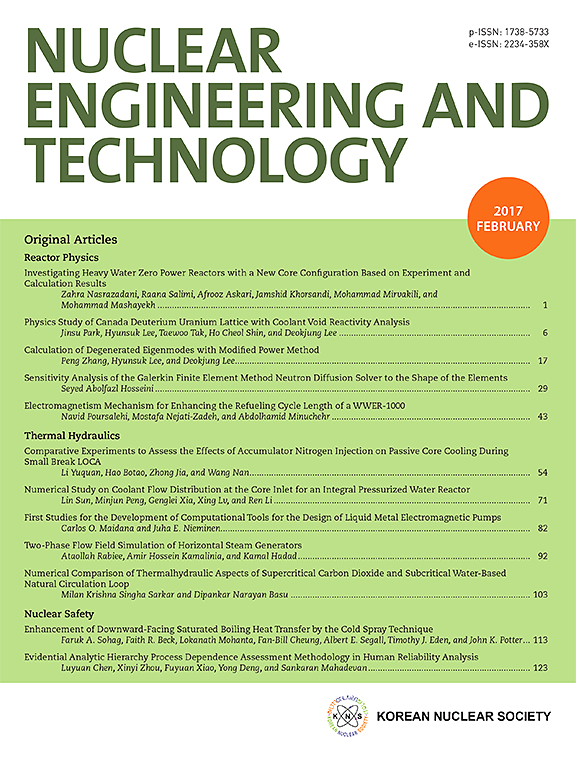液体和聚合介质的激光清洗和去污研究
IF 2.6
3区 工程技术
Q1 NUCLEAR SCIENCE & TECHNOLOGY
引用次数: 0
摘要
该研究强调了开发新方法去除设备上铀和钚等物质积聚造成的表面放射性污染的重要性。脉冲激光清洗,特别有效的结合液体介质,被视为一个有前途的解决方案。为了安全测试该技术,对受氧化铈污染的AISI 321不锈钢模型样品进行了初步实验,然后对铀和钚盐的实际污染物进行了实验。为了最大限度地减少气溶胶释放并防止表面过热,使用了不同的液体:水、丙酮、异丙醇和聚乙烯醇(PVA)溶液。激光清洗PVA的效率很高,一次可去除90%以上的污染物。最佳激光模式最大限度地减少了材料表面的结构变化。聚乙烯醇可靠地固定污染物,聚合后,很容易从样品中作为固体膜去除。本文章由计算机程序翻译,如有差异,请以英文原文为准。
Studies of laser cleaning and decontamination in liquid and polymerized media
The study highlights the importance of developing new methods for decontaminating surface radioactive contamination caused by the accumulation of substances such as uranium and plutonium on equipment. Pulsed laser cleaning, which is particularly effective in combination with liquid media, is seen as a promising solution. To safely test the technology, preliminary experiments were carried out on model samples of AISI 321 stainless steel contaminated with cerium oxide, and then on real contaminants of uranium and plutonium salts. Different liquids were used to minimize aerosol release and prevent surface overheating: water, acetone, isopropyl alcohol and polyvinyl alcohol (PVA) solution. Laser cleaning in PVA showed high efficiency, removing more than 90 % of the contaminants in a single pass. Optimal laser modes minimized structural changes to the material surface. The PVA reliably fixes contaminants and, after polymerization, is easily removed from the sample as a solid film.
求助全文
通过发布文献求助,成功后即可免费获取论文全文。
去求助
来源期刊

Nuclear Engineering and Technology
工程技术-核科学技术
CiteScore
4.80
自引率
7.40%
发文量
431
审稿时长
3.5 months
期刊介绍:
Nuclear Engineering and Technology (NET), an international journal of the Korean Nuclear Society (KNS), publishes peer-reviewed papers on original research, ideas and developments in all areas of the field of nuclear science and technology. NET bimonthly publishes original articles, reviews, and technical notes. The journal is listed in the Science Citation Index Expanded (SCIE) of Thomson Reuters.
NET covers all fields for peaceful utilization of nuclear energy and radiation as follows:
1) Reactor Physics
2) Thermal Hydraulics
3) Nuclear Safety
4) Nuclear I&C
5) Nuclear Physics, Fusion, and Laser Technology
6) Nuclear Fuel Cycle and Radioactive Waste Management
7) Nuclear Fuel and Reactor Materials
8) Radiation Application
9) Radiation Protection
10) Nuclear Structural Analysis and Plant Management & Maintenance
11) Nuclear Policy, Economics, and Human Resource Development
 求助内容:
求助内容: 应助结果提醒方式:
应助结果提醒方式:


